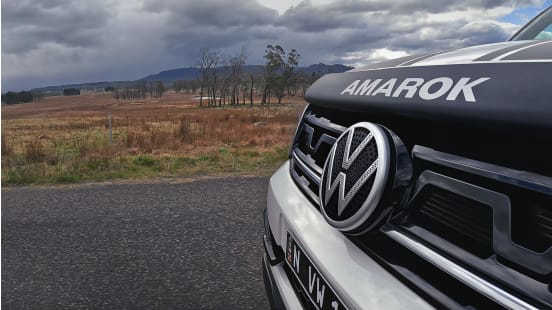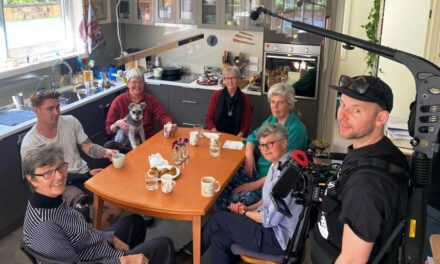Animal-vehicle collisions are a well-know road safety issue for drivers in regional Australia and the incidence of direct and indirect animal collisions is increasing in Victoria according to the Victorian State Trauma Registry.
Engineering attempts to reduce animal-vehicle collisions include warning signs, speed restrictions, roadside barriers, crossing structures and roadside animal detection systems. Deterrent devices exist but none have been scientifically developed or proven.
In an innovative approach, Volkswagen Group Australia has partnered with Melbourne University to develop a deterrent system to warn animals of an approaching vehicle.
Developed over three years by Volkswagen Australia and the DDB Group in consultation with the University of Melbourne and WIRES Australian Wildlife Rescue Organisation, it is hoped that Volkswagen’s ‘RooBadge’ will help reduce collisions with kangaroos which comprise some 90 per cent of on-road wildlife accidents.
Connecting to an in-car app, RooBadge calibrates a vehicle’s GPS coordinates with kangaroo distribution data. The ‘badge’ itself is a circular disc some 17cm in diameter that would act as a protective shield, replacing the current Volkswagen roundel/badge.
The RooBadge conveys a unique audio deterrent for the kangaroo species that inhabits the vehicle’s particular location. A mixture of natural and artificial sounds is mixed in real time and projected in a high frequency audio signal.
“It’s difficult to produce a single sound that will deter all kangaroos, because the species are different to each other,” said Melbourne University’s Associate Professor Graeme Coulson. “Using advancement in car technology we can change the sound deterrent by GPS location.”
“We have worked on sounds that will be meaningful to Eastern Grey Kangaroos, things like dingo calls, alarm calls made by birds and the alarm thumps that kangaroos make to warn each other. We will then be able to tweak the sound for other species.”
WIRES spokesperson, John Grant, said: “Kangaroo collisions are increasing every year and with more motorists on the roads. WIRES is grateful to automotive companies like Volkswagen for researching and developing solutions to better protect both our kangaroos and motorists.”
 Director of Volkswagen Commercial Vehicles Ryan Davies said: “A collision with a ‘roo can be devastating. It is not easily forgotten once seen, and certainly not if experienced. Then there’s the possibility of a front-on collision with an approaching vehicle at country road speeds when one driver is trying to avoid striking a kangaroo. These are speeds when one driver is trying to avoid striking a kangaroo. These are even more likely to have a fatal human outcome.”
Director of Volkswagen Commercial Vehicles Ryan Davies said: “A collision with a ‘roo can be devastating. It is not easily forgotten once seen, and certainly not if experienced. Then there’s the possibility of a front-on collision with an approaching vehicle at country road speeds when one driver is trying to avoid striking a kangaroo. These are speeds when one driver is trying to avoid striking a kangaroo. These are even more likely to have a fatal human outcome.”
The University of Melbourne’s Dr Helen Bender, whose research has been used extensively in this project, said: “Roadkill is a problem all around the world. Whatever we learn has transferability to the deer and other animals as well.”
Volkswagen will not make the RooBadge a proprietary VW product. They are developing a universally mountable version that will allow any vehicle, irrespective of its manufacturer, to install a RooBadge.
The RooBadge and the universally mountable version are not currently available for purchase. After extensive trials, permission has been obtained from the University of Melbourne Office of Research Ethics and Integrity to move into Stage Four trials, involving kangaroos in the wild. Developers are continuing to test sound profiles to optimise the system and demonstrate effectiveness.
More information is available at www.volkswagen.com.au/roobadge.
This article is based on a media release from Volkswagen Group Australia.
Related stories:
Drive Carefully – Don’t Add to the Injured Wildlife Statistics
This article is based on a media release from Volkswagen Group Australia.











